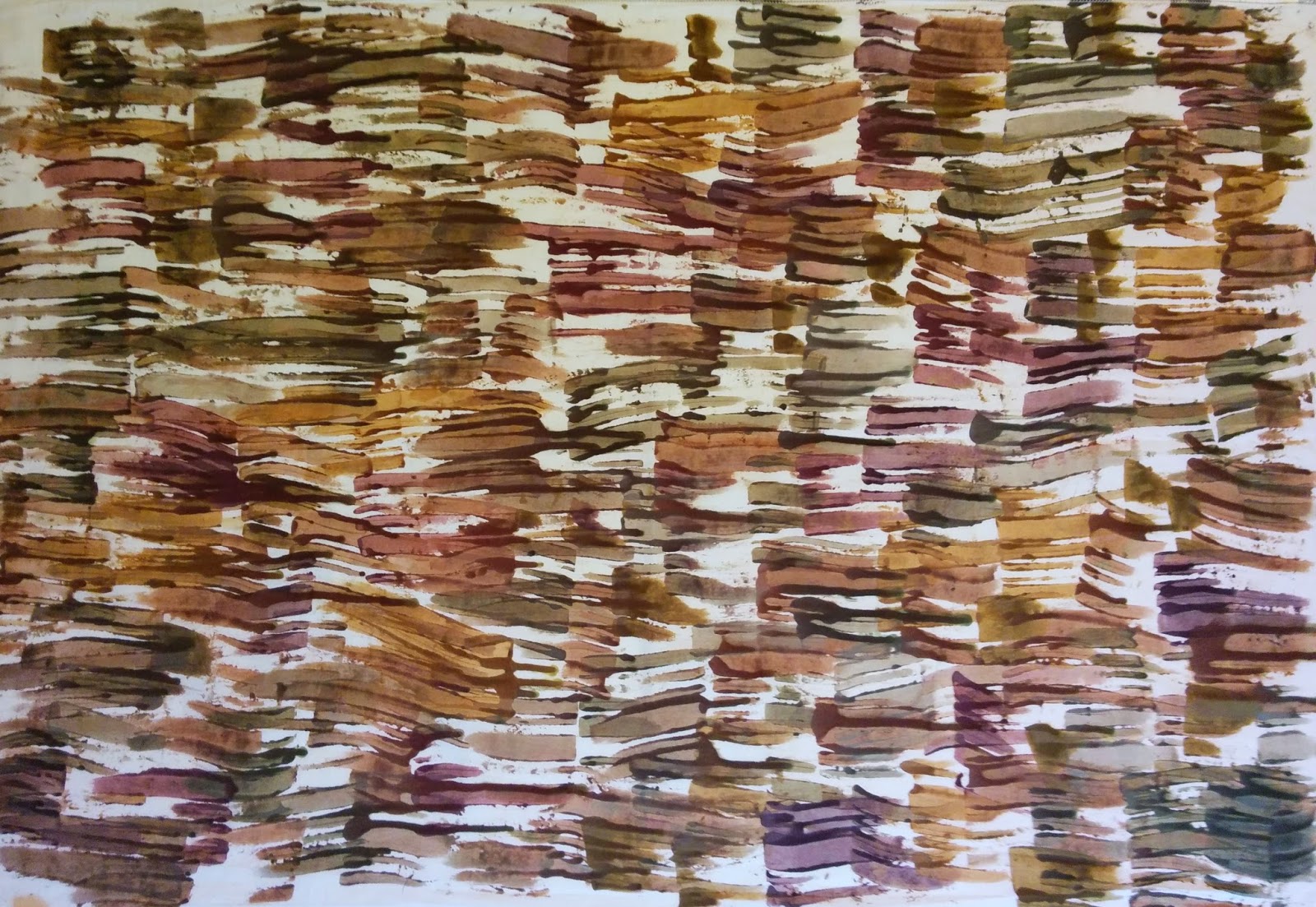I was honored to be able to give a lecture entitled "Museum Collaboration to Interpret History Through Surface Design - The Margaret M.Conant Grant 2015 Experience" to the Potomac Fiber Arts Guild on Feb. 13, 2016. I was asked to provide a bibliography for the grant project. It's been awhile since I learned to do bibliographies, so I started to look around for a formatting guide. I was delighted to find this tool on-line: http://www.easybib.com. Creating the bibliography was a breeze thanks to the EasyBib: Free Bibliography Generator. All of the books I used were automatically found and cited. The DVDs were trickier as they weren't automatically found on-line. I did have to type the information into a form, but the formatting was still created automagically. Below you'll find the books and DVDs that I referenced for the grant.
Bibliography for the
2014 Margaret M. Conant Grant by Diana Guenther
Books:
Alexander, Christopher. The Luminous Ground: An Essay on
the Art of Building and the Nature of the Universe. Berkeley, CA: Center
for Environmental Structure, 2004. Print.
Alexander, Christopher. The Nature of Order: An Essay on
the Art of Building and the Nature of the Universe. Berkeley, CA: Center
for Environmental Structure, 2002. Print.
Bang, Molly. Picture This: How Pictures Work.
New York: SeaStar, 2000. Print.
Benn, Claire. Thermofax Printing: Bringing
Personal Imagery Alive. Betchworth: Committed to Cloth, 2010. Print.
Benn, Claire, and Leslie
Morgan. Making Your Mark:
Creating Cloth for Imagery, Stitch, Embroidery & Embellishment.
Betchworth, Surrey: Potter's Farm Studio for Committed to Cloth, 2011. Print.
Benn, Claire, and Leslie
Morgan. Screen Printing:
Layering Textiles with Colour, Texture & Imagery. Surrey, England?:
Committed to Cloth, 2010. Print.
Cerda, Roxane, comp. Krafttex(TM) Style: Krafttex
Combines the Best of Leather & Fabric Sew 27 Projects. N.p.: C&T,
2014. Print.
Dunnewold, Jane, Claire
Benn, and Leslie Morgan. Finding
Your Own Visual Language: A Practical Guide to Design & Composition.
Place of Publication Not Identified: Committed to Cloth, 2007. Print.
Kleon, Austin. Steal like an Artist: 10 Things
Nobody Told You about Being Creative. New York: Workman Pub., 2012. Print.
Lach, Denise. Calligraphy: A Book of Contemporary
Inspiration. London: Thames & Hudson, 2009. Print.
Lach, Denise. Journeys in Calligraphy: Inspiring
Scripts from around the World. London: Thames & Hudson, 2015. Print.
Manakee, Harold R. Indians of Early Maryland: A Book
on Maryland Life. Baltimore, MD: Maryland Historical Society, 1959. Print.
DVDs:
Riley, Lesley. Creative Image Transfer--any
Artist, Any Style, Any Surface: 16 New Mixed-media Projects Using Transfer
Artist Paper. N.p.: n.p., n.d. Print.
Riley, Lesley. Fabulous Fabric Art with Lutradur:
For Quilting, Papercrafts, Mixed Media Art: 27 Techniques & 14 Projects Revolutionize
Your Craft Experience! Lafayette,
CA: C & T Pub., 2009. Print.
Complex
Cloth: The Workshops. Dir. Jane
Dunnewold. Perf. Jane Dunnewold. Art Cloth Studios, 2005. DVD.
Contemporary
Fabric Collage. Dir.
Deborah Boschert. Perf. Deborah Boschert. Interweave Press LLC, 2012. DVD.
Deconstructed
Screen Printing for Fabric and Paper. Dir. Kerr Grabowski. Perf. Kerr Grabowski. Flying Pig Virtual
Construction, 2007. DVD.
Felt-Backed
Textiles: A Contemporary Finishing and Hanging Technique with Jane Dunnewold. Perf. Jane Dunnewold. Quilting Arts. Interweave
Press, n.d. Web.
Improvisational
Screen Printing: The Workshop. Dir. Jane Dunnewold. Perf. Jane Dunnewold. Art Cloth Studios, 2007.
DVD.
Irresistible
Texture: Using Resists to Create Stunning Cloth. Dir. Lisa Kerpoe. Perf. Lisa Kerpoe. Lisa
Kerpoe, 2010. DVD.
Modern
Memory Quilts. Dir.
Lesley Riley. Perf. Lesley Riley. F+W Media, Inc, 2015. DVD.
Stitch
Resist Reconsidered. Dir.
Andrew Galli. Perf. Ana Lisa Hedstrom. Galli Films, 2012. DVD.
Books:Books:


















